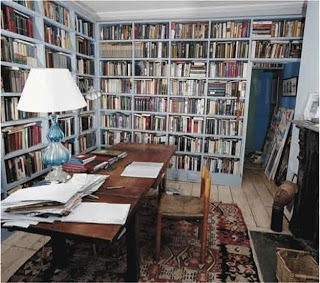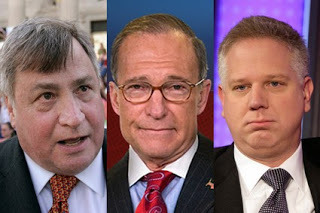My Top 10 Must-Read Books for Writers

I have a larger collection of books on creative writing than most college libraries own. I have been collecting, reading, and studying them all my life. And in one way or another, I have found them all useful.
Some recapitulate concepts, techniques, and tips from many other books, but they will perhaps have one I haven’t yet encountered—or they will express one or more I’ve met before in such a way that it sinks in more deeply than it did when I ran across it earlier. So I count those books still successful for me, if in small ways. Many of the books I own deal with specific kinds of writing or with specific techniques—mysteries and suspense, science fiction, dialogue, plotting—and I’ve often found them extremely useful, frequently return to the best of them again and again.
When I wanted to narrow down my books to a most-critical shortlist for this blog, I found that repeatedly the books that shot to the top were books that dealt with the writing process as a whole, with being a writer and living a writer’s life. Each will have some specific techniques within, but the book as a whole is about the process of becoming and being a writer. They deal with overcoming negativity and fear, dealing with belittling from others, developing the discipline necessary to make a life as a writer, defeating the intimidation of starting a big project, and in one blessed case, how to make a writing life within the business of writing and publishing.
These are the books I recommend again and again to students and friends, to anyone who asks me for advice and help. They are books I still go back to time and again. They’re not the only good books on writing. I never get rid of any of my vast collection of writing books because they all have at least one thing to offer me. But these ten books are the ones I would keep if I could suddenly only have ten books on writing in my library.
Carolyn See’s Living a Literary Life is at the top of the list because it is such a little gem. I’ve bought so many copies of this book to give to aspiring writers. I only wish it had been available to me earlier in my career. By the time, I discovered it I’d learned some of what it teaches the hard way. It rings true in all of its suggestions and guidelines because See is a successful writer and teacher who’s writing from experience. Living a Literary Life deals with things few other books do, such as how to have a writing career when you live far from the epicenter of publishing in New York or how to develop friendships and connections with literary and publishing colleagues if you know no one. This last may seem easier to do now that social media is available, but See’s suggestions in this area are even more relevant in a time when a handwritten note is remarkable. If I can recommend or give only one book, this is the one I choose.
Dorothea Brande’s Becoming a Writer is the other book I’d give if only allowed to give two. Published in the 1930s and long out of print, award-winning novelist John Gardner swore by it and mentioned its importance in one of his own books on writing (see below), which led to it being reissued with a foreword by Gardner. This book deals with the psychology of the writer, with how to develop the confidence, the focus, and the discipline any writer needs and how to learn what your material, your individual forte as a writer is. It teaches us techniques to connect with our creativity and learn to see and experience the world as writers. It would be worth a fortune for its technique of “Act As If” alone, which has been picked up by many other writing gurus and self-help authors. It also offers the initial appearance of the fruitful technique of freewriting first thing in the morning (later built on by Natalie Goldberg and Julia Cameron among others). This book is a lifesaver for writers.
These two, above all the others, are immensely helpful to anyone who wants to write as more than a hobby. For the rest of the books on the list, I have no definite order. They offer different things to the writer and fill different needs, so it wasn’t workable for me to rank them by importance. Each would leave an important hole in my writing library if it were missing, however.
Uber best-selling Stephen King’s On Writing: A Memoir of the Craft is one of the best general guides to writing extant. A master class in a book, it’s a tiny treasure house of useful and pithy advice on everything from getting and taking feedback, individual techniques like description, plot, and character, how to organize a workspace and structure your day’s work to his stricture on reading that I love to quote to students: “If you don’t have time to read, you don’t have the time (or the tools) to write. Simple as that.” And this is definitely one of the books you need to make time to read.
Natalie Goldberg’s Writing Down the Bones marries Dorothea Brande’s freewriting morning pages technique to her own intensive yoga background to build a tremendously useful set of practices for writers to follow. This book focuses on getting in touch with your own creative spirit and defeating resistance and fear. It’s more modern in outlook than Brande’s and the borrowings from yoga are quite useful. It takes the important foundations of Brande’s book and adds to them, but you won’t find all those foundations here, so though I recommend this book highly, if you have to make a choice of only one, get Brande’s. (Julia Cameron has taken the same techniques and added another layer of 12-step spirituality and dogma to them in The Artist’s Way. Many have found that helpful to them, as well, but again you won’t find all the important fundamentals Brande gives you in The Artist’s Way, either.)
Award-winning children’s book author Madeleine L’Engle’s A Circle of Quiet is an intimate little book, the first of her Crosswicks Journals series. A meditative book about life and writing, it’s also a book about failure and rejection, about feeling guilty for taking time to write when earning no money from it, about the collision of family and writing, and about the humility that good writing requires. Some of the most important things I’ve taken from this book have been her focus on using journals and writer’s notebooks to do various writing exercises, which she gives you in the book, and her stress that real artists keep studying, practicing, and learning all the time in order to keep growing. You can learn much from this book, and it’s the ultimate writer’s comfort book when feeling down.
Leonard Bishop’s Dare to Be a Great Writer is a big book with a big title. Bishop was a grade-school dropout, thief, and hobo who became a critically acclaimed novelist and friend of Norman Mailer and Joseph Heller before becoming one of the top-rated writing professors in the country. His big, brash book is blunt in its advice, which ranges from discipline and structuring your life around writing to tons of techniques from tiny to large, from smooth sentence transitions to genre structures. This is a fabulous writer’s reference. Each separate entry is in alphabetical order and thus easy to look up and refer to. My copy sits next to my desk marked with a rainbow of Post-Its and bookmarks.
 Bestselling mystery novelist Elizabeth George’s Write Away: One Writer’s Approach to Fiction and the Writing Life is aimed at the writer of mysteries and crime fiction, but offers great help for all novelists. George provides another master class in this book with a detailed overview of how to construct a novel, a step-by-step analysis of her process from idea to final edits, and help with all kinds of technique, using examples from her own work and that of other commercial and literary novelists. Again, this is a book I return to time and again, always learning something. An example of one of her unique technique helps is THADs, Talking Head Avoidance Devices, ways to occupy characters when they must have a critical dialogue so that more happens on the page than just the dreaded talking heads as in a public affairs TV show.
Bestselling mystery novelist Elizabeth George’s Write Away: One Writer’s Approach to Fiction and the Writing Life is aimed at the writer of mysteries and crime fiction, but offers great help for all novelists. George provides another master class in this book with a detailed overview of how to construct a novel, a step-by-step analysis of her process from idea to final edits, and help with all kinds of technique, using examples from her own work and that of other commercial and literary novelists. Again, this is a book I return to time and again, always learning something. An example of one of her unique technique helps is THADs, Talking Head Avoidance Devices, ways to occupy characters when they must have a critical dialogue so that more happens on the page than just the dreaded talking heads as in a public affairs TV show.Brenda Ueland’s If You Want to Write: A Book about Art, Independence, and Spirit is another older book, one that Carl Sandburg called “the best book ever written about how to write." This is a book about tapping into your own creative spirit and delight. Her chapter titles alone are a treatise on the writing life. Here are two examples: “Everybody is Talented, Original and Has Something Important to Say” and “Why Women Who Do Too Much Housework Should Neglect It for Their Writing.” She stresses that any creative gift increases as we use it and with some lazy time, which she calls “moodling” and insists is critical to the really important big, slow ideas. Read this book to help find your creative center.
John Gardner’s On Becoming a Novelist is hugely helpful to novelists in particular. Gardner is widely considered one of the great American novelists of the 20th century, and he taught many other critically acclaimed writers, such as Raymond Carver. Gardner, as I mentioned earlier, was responsible for bringing Dorothea Brande’s book from obscurity, and his own book is a grand follow-up to hers, but aimed at novelists and not all writers. Gardner goes deeply into the need to create a kind of dream-state in the reader’s mind as well as the benefits of repeated revisions. There’s much in here about making a writer’s life for yourself today and much as well about the benefits and difficulties for novelists of MFA program that are centered on poetry and short fiction.
Annie Dillard’s The Writing Life is, like, Stephen King’s book, part autobiography of the writer and part guidebook to the world of the working writer. Though not as absolutely useful in practical terms to the writer as King’s book, Dillard’s is full of strange beauties and a real sense of the writer as one who is, or should be, dedicated spiritually to her art. One of my favorite writing quotes comes from this book: “Spend it all, shoot it, play it, lose it, all, right away, every time. Do not hoard what seems good for a later place in the book, or for another book; give it, give it all, give it now.”
These are the gems of my collection. Do you have a favorite book on or about writing? Do you find writing books helpful, at all?
Published on June 11, 2013 13:19
No comments have been added yet.



